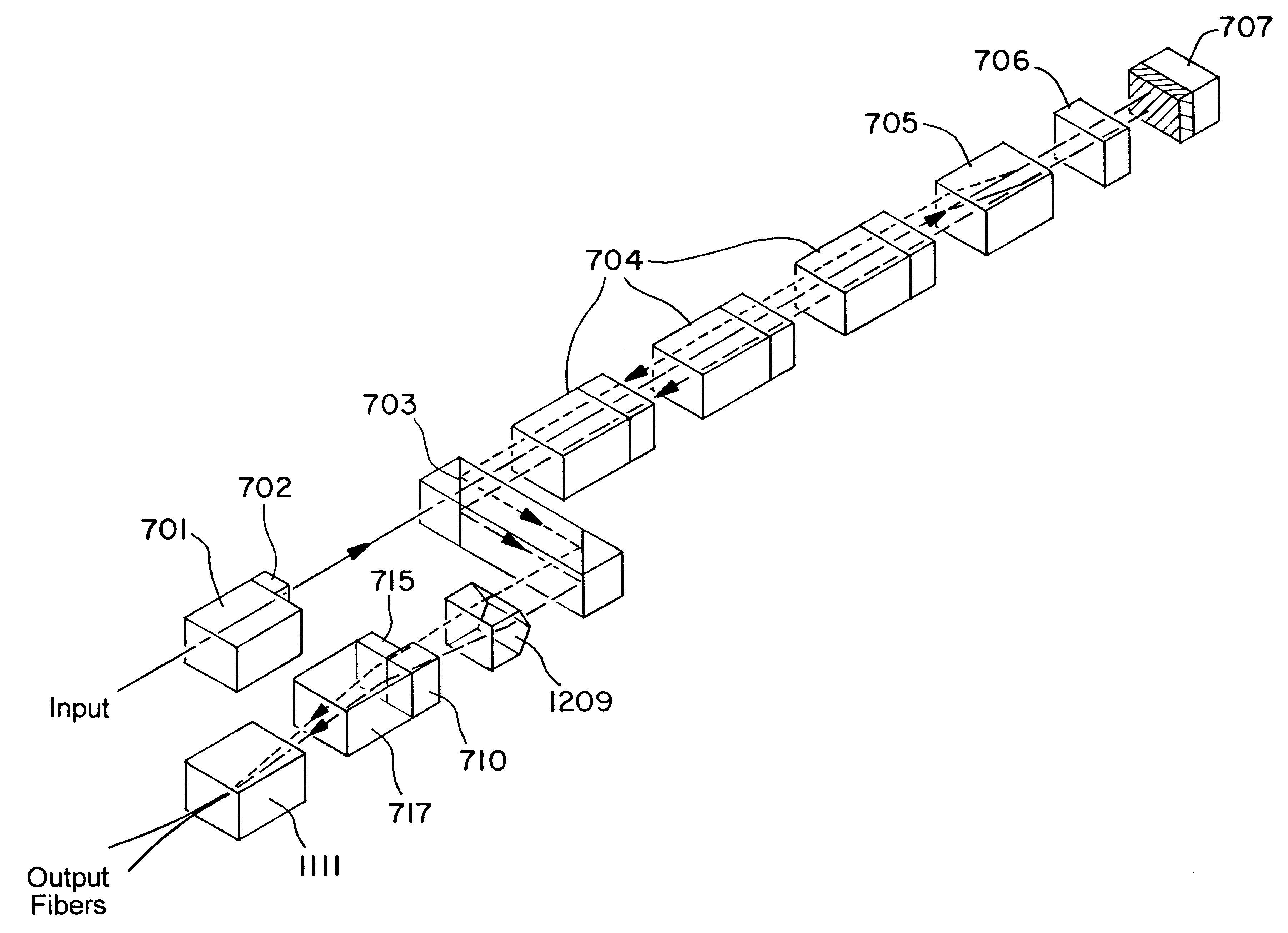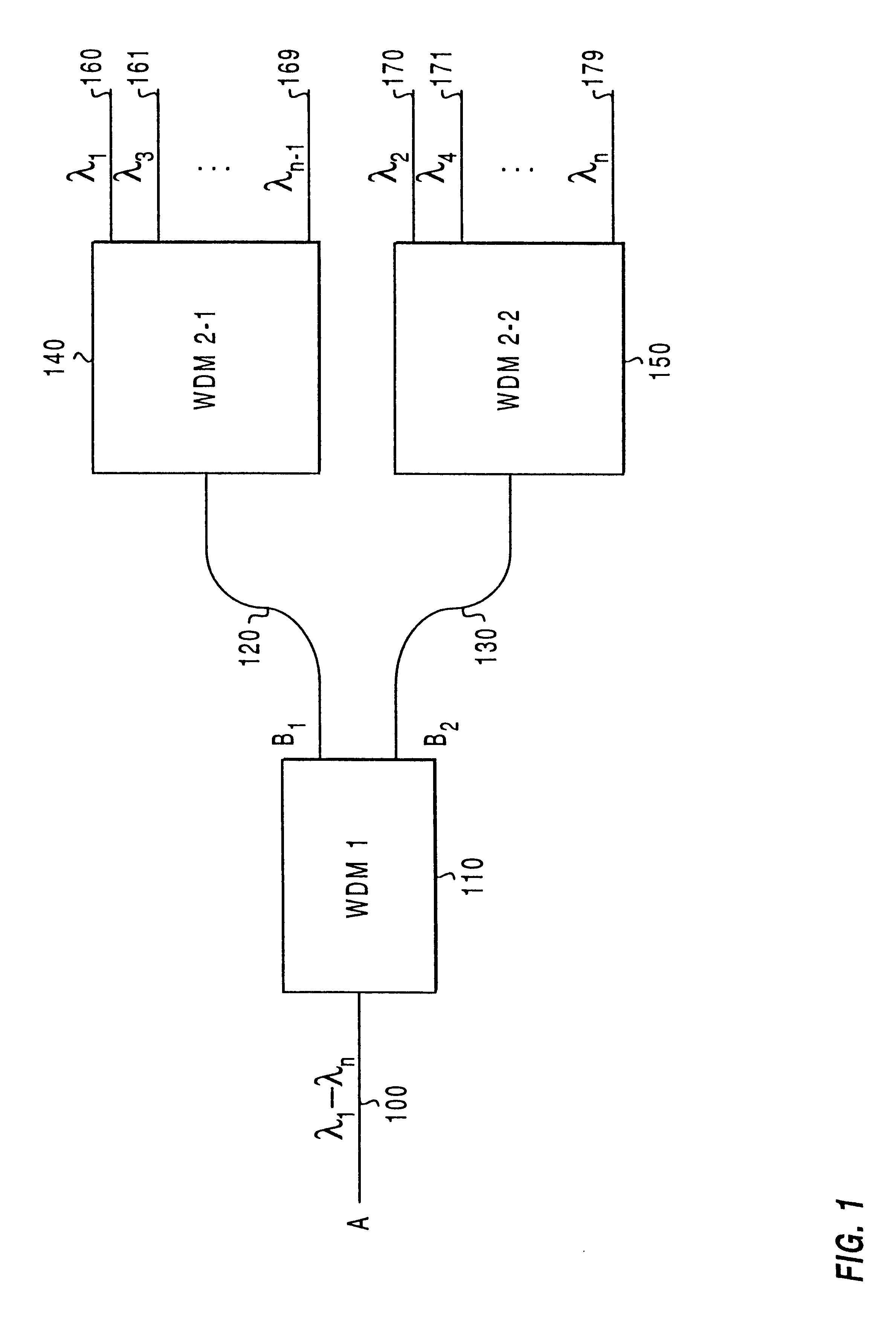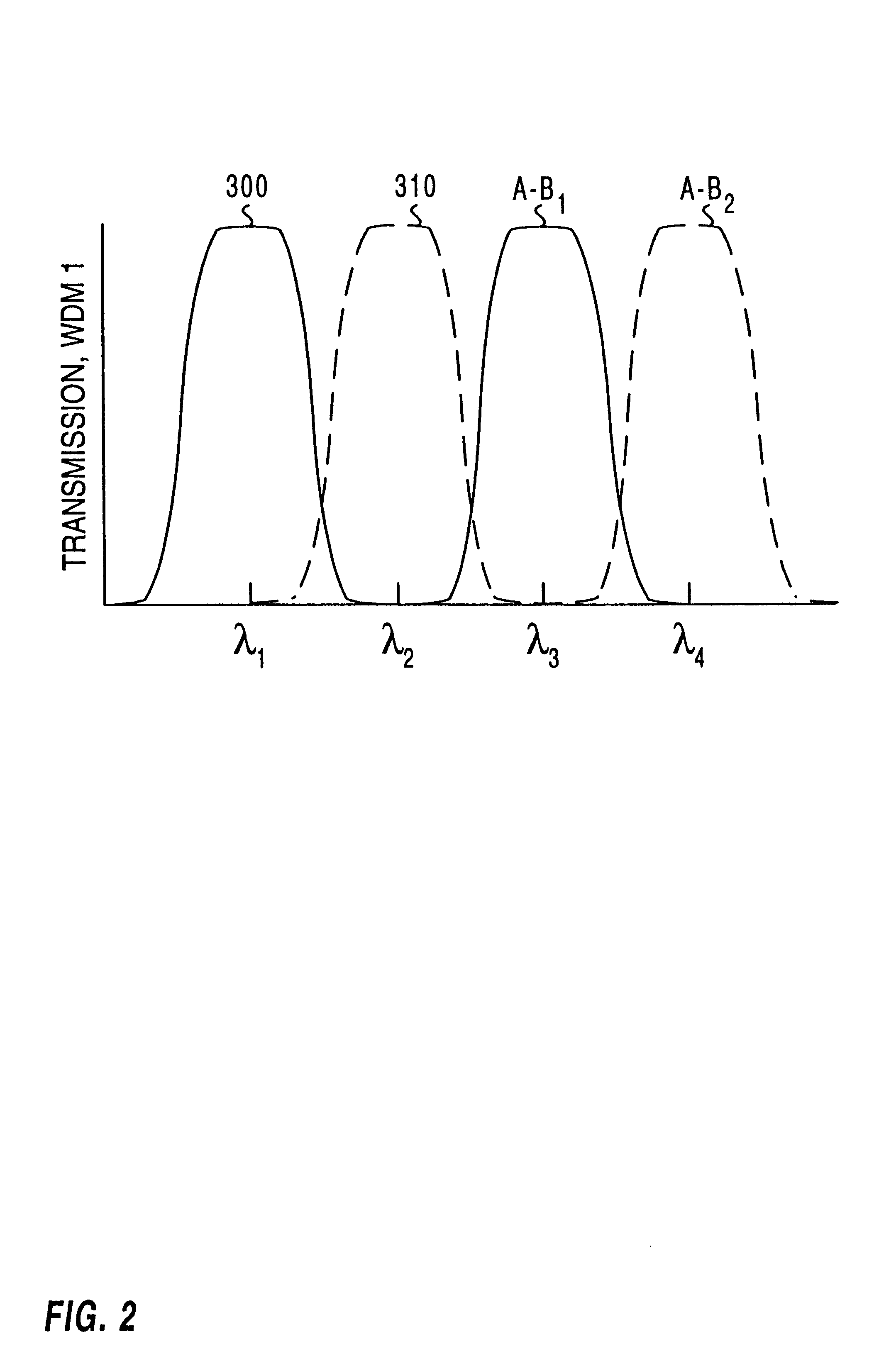Compact wavelength filter using optical birefringence and reflective elements
a technology of optical birefringence and reflective elements, applied in the field of optical wavelength filters, can solve the problems of inability to meet the needs of polarizing elements, and inability to separate wavelengths, so as to reduce the polarization dispersion, and reduce the polarization
- Summary
- Abstract
- Description
- Claims
- Application Information
AI Technical Summary
Benefits of technology
Problems solved by technology
Method used
Image
Examples
Embodiment Construction
In describing a preferred embodiment of the invention illustrated in the drawings, specific terminology will be used for the sake of clarity. However, the invention is not intended to be limited to the specific terms so selected, and it is to be understood that each specific term includes all technical equivalents which operate in a similar manner to accomplish a similar purpose.
When used herein, the term multiplexer / demultiplexer refers to a device which can be used to either combine or separate wavelengths. However, such a definition does not preclude the use of the device for one function only. In addition, nonreciprocal elements can be added, precluding use of the device for one of the functions of multiplexing or demultiplexing, although the features and functionality of multiplexer / demultiplexer remain the same in the direction of use.
When used in a cascade, the term first stage refers to the first stage of the cascade in a demultiplexing configuration, where closely spaced wa...
PUM
| Property | Measurement | Unit |
|---|---|---|
| flatness | aaaaa | aaaaa |
| optical transmission function | aaaaa | aaaaa |
| optical path | aaaaa | aaaaa |
Abstract
Description
Claims
Application Information
 Login to View More
Login to View More - R&D
- Intellectual Property
- Life Sciences
- Materials
- Tech Scout
- Unparalleled Data Quality
- Higher Quality Content
- 60% Fewer Hallucinations
Browse by: Latest US Patents, China's latest patents, Technical Efficacy Thesaurus, Application Domain, Technology Topic, Popular Technical Reports.
© 2025 PatSnap. All rights reserved.Legal|Privacy policy|Modern Slavery Act Transparency Statement|Sitemap|About US| Contact US: help@patsnap.com



